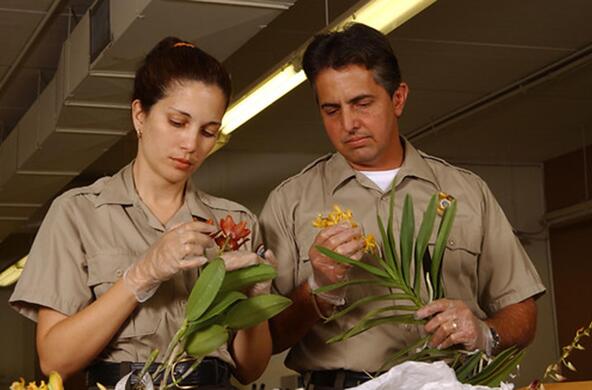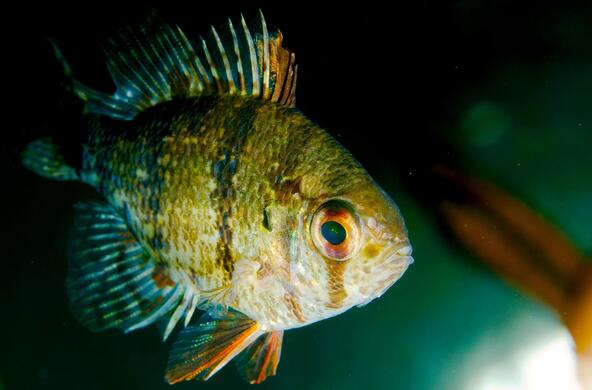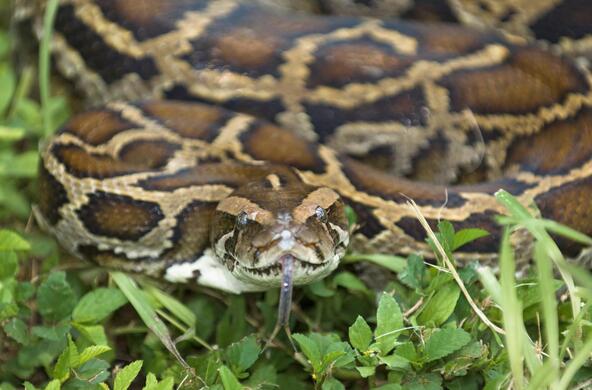If you pay attention to plants, you already know non-native species are commonplace. Queen Anne's lace, chicory and garlic mustard — familiar sights along our roads — are just a handful of the species brought to the U.S. for medicinal or edible purposes.
But while it's one thing to spot garlic mustard along a roadside, it's quite another to see it blanketing the floor of a mature forest. Sadly, many non-native plants have established in our wild areas, to the detriment of native plants, wildlife and the oft-overlooked services that native plant communities provide.
Kitchen-garden escapees have been joined by rogue ornamentals.
And a number of plants now recognized as harmful were once promoted, with good intentions, by various natural resource agencies as solutions to soil erosion.
Several Asian honeysuckle species are abundant in our fields, open forests and floodplains — each with a competitive advantage that lets them overtake native species. Adding insult to injury, the berries of invasive honeysuckles are less nutritious than their native counterparts. Birds must eat more to meet their caloric needs, further spreading the plants.
Multiflora rose, native to eastern China, Japan and Korea, was once touted for its wildlife and soil benefits, and used as a "living fence." It now forms impenetrable thickets in our woodlands, forest edges and meadows — often to the exclusion of native plants. Anyone who has tried to eradicate a bush knows they make formidable opponents.
Japanese barberry, promoted as a shrub to plant under windows to deter burglars, is now established far from suburban enclaves. The joke is on us, because it became the intruder. Now common in our second-growth forests, barberry is impossible to miss in the fall and winter when it is covered in bright red fruits.
This is just a handful of nonnative plants that became seriously invasive. A common theme among them: left to their own devices, they eventually got out of control. This lag-time can be decades, or generations. Thankfully, botanists and ecologists have gotten much better at identifying traits that lead to invasiveness.
Some of the most successful invaders edge out native plants by producing prolific seeds, establishing new plants through root runners and leafing-out earlier in the spring.
Many also lack predators, are unpalatable to deer and have fruits that let their seeds be spread by birds.
We need only to look at ancient pollen trapped in lake sediments to realize that plants living in an area change over time. But thanks to cargo boats, planes and booming global trade, the pace of new introductions has vastly accelerated.
If we continue to shake up the Earth like a snow globe, letting species settle where they may, we will wind up with a very different looking home. Losses to plant and animal diversity are certain. Such a planet might be less hospitable to a species we tend to care a lot about: Homo sapiens.
Natural plant communities are not passive. They process pollutants, mitigate floods, prevent erosion, renew soil fertility, oxygenate water bodies and store carbon, among other things. Scientists at places like the Cary Institute are working to understand how non-native plants and animals affect the quality of the environment.
In the meantime, we can all do our part to prevent headaches for future generations. We have predictive tools, a booming native plant industry, and hindsight on our side.
Let's be more careful about inadvertently carrying plants around the world and more cautious about introducing plants in our home landscape.
Coming up
Interested in learning more? On July 6, the Cary Institute will host an interpretive hike for Invasive Species Awareness Week. And on Aug. 8, landscape architect Larry Weaner will give a lecture on landscaping with native plants.





